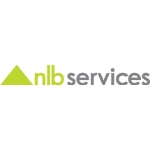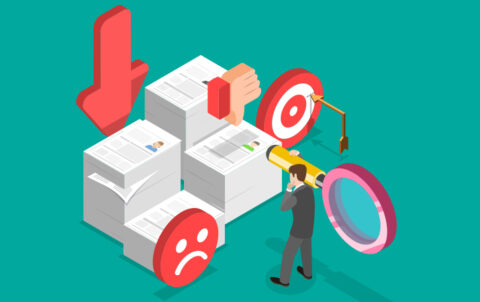© 2025 Next Level Business Services Inc. All Rights Reserved.
Enhancing Employee Retention through Perks and Benefits
By NLB Services
Unemployment rates have been at a historical low across many countries. Despite concerns of an impending economic recession, employees are increasingly quitting their jobs in search of better job opportunities, perks, and benefits. Amidst the ongoing talent war intensified by the pandemic, the current job market remains favorable for prospective employees, meaning employers are now compelled to exercise their due diligence and go above and beyond conventional measures to recruit and retain talent. In this blog article, we will delve into the art of developing a strong retention strategy by maximizing the value of incentives and perks at work. We will also examine the necessary measures businesses should undertake in their quest to develop the most effective benefits program for their employees.
Employee Benefits Program: Objectives and Budgeting
Employee benefit programs essentially consist of an extensive array of tangible and intangible incentives that go beyond their basic salaries and wages. These offerings may be voluntary or, in some cases, even legally mandated, comprising a variety of benefits such as healthcare coverage, flexible working hours, retirement plans, wellness facilities, and educational support programs, along with other provisions to enhance the overall employee experience.
When designing an employee benefits program, it is of utmost importance to prioritize identifying and establishing clear objectives. Basically, these objectives act as an underlying force informing the selection and design of the benefits program, aligning with the organization’s overall strategic goals as well as employees’ requirements, thereby addressing the needs of both stakeholders effectively. When determining the objectives for employee perks, it is crucial to consider factors such as the organization’s size, location, and the relevant industry to align the benefits strategy effectively. These factors can greatly influence the specific needs and preferences of the employees, as well as the resources and limitations of the organization. By taking cognizance of these factors, employers can formulate a company’s benefits program tailoring and customizing it to cater to the unique requirements of their workforce. We strongly recommend regularly evaluating and revising the benefits objectives given the ever-evolving business landscape and the resultant changes in employee needs. By re-assessing the objectives at regular intervals, employers can ensure that the benefits program remains relevant and effective in supporting the organization’s strategy whilst also meeting the evolving needs of the employees.
Organizations should also factor in budget requirements and allocate funds effectively to get the most out of their initiatives. We know that implementing an employee benefits program is both indispensable and financially demanding. Nevertheless, such programs serve as a vital avenue in cultivating a positive employee experience within the organization. Given the limited budgets, companies should strategically determine the optimal benefits combination that can yield the greatest positive impact without exceeding financial limitations.
Understanding Employee Needs and Preferences
Employee benefits have taken a whole new meaning in the current dynamic work environment. The advent of remote work and increased transparency brought about by digitalization have collectively bolstered the significance of providing meaningful benefits and perks at work to enhance employee engagement. Moreover, with an increasing influx of Gen Z entering the job market and considering the younger generation’s prioritization of company culture over monetary compensation, companies are now faced with the critical challenge of meeting diverse needs and offering benefits that cater to employees across all age groups. A comprehensive understanding of the employees’ ever-evolving and varied needs is elemental to developing effective retention strategies that maximize the potential of perks and benefits. This mandates the need to delve intricately into the nuances of what truly holds value for them through employee assessments.
This assessment encompasses various factors, including the employer’s understanding of employee benefit needs, analysis of competitor’s benefits practices, and compliance with relevant tax laws and regulations. By undertaking this needs assessment through questionnaires and interviews, organizations can make informed decisions regarding the most suitable benefits offerings that align with employee expectations, industry standards, and legal compliance. Employers may also perform a utilization analysis for existing benefit plans to evaluate actual employee use. Knowing how frequently and to what degree a certain benefit is used may assist the employer in determining cost-saving design practices.
These assessment tools also serve as an invaluable medium for gaining insights into the demographic composition of the current workforce and discerning their distinct needs. For instance, younger employees might emphasize benefits like flexible working hours and paid leave to support their work-life balance and personal development. On the other hand, older employees may prefer retirement income plans, acknowledging the significance of securing their long-term financial stability. By recognizing and adapting to the varying priorities and preferences across different age groups, organizations can create a benefits package that resonates with their employees at different stages of their careers. This approach cultivates an all-inclusive work culture, greater loyalty, and higher employee retention rates.
Designing a Competitive Employee Benefits Package
At this stage, you should clearly understand the most sought-after benefits by your employees and have a firm grasp of your budgetary constraints. Armed with this knowledge, you are well-equipped to design a competitive employee benefits package culminating in a range of core benefits and additional perks and incentives.
To build a robust employee benefits program, it is essential to include the core employee benefits mandated by legal regulations. These benefits, such as unemployment insurance, workers’ compensation insurance, family and medical leave, and social security, provide vital protection for employees. Moreover, it is imperative to incorporate optional benefits that have become industry standards to attract and retain top talent. These additional benefits can include generous paid time off policies, flexible work arrangements that promote work-life balance, and engaging wellness programs that prioritize employee health and wellness. Providing such extensive benefits not only meets your employees’ expectations but also showcases your commitment to fostering a supportive and fulfilling work environment.
Enhancing Employee Experience with Perks at Work
Improving employee experience has become a priority in today’s competitive environment. Organizations can significantly improve working conditions and job satisfaction by introducing performance benefits such as recognition and reward programs or employee assistance initiatives, thereby increasing employee engagement, motivation, and overall well-being. Let’s look at the two in greater detail to understand their significance and relevance.
An employee recognition program is a structured process that organizations use to recognize and appreciate the contributions, achievements, and exceptional performance of their employees. These programs can be tailored to meet the unique needs of each company, as they are influenced by specific business objectives and desired behaviors. Before formulating such a program, it is important to define the desired actions and achievements that align with company values and goals to determine the most effective ways to recognize and reward them. For instance, if a marketing firm aims to encourage its employees to come up with creative ideas to drive social media campaigns, it can provide bonuses or other recognition accolades like employee of the month to those who ideate unique concepts.
Employee recognition programs can help in increasing overall employee engagement as employees are likely to contribute more when their work is recognized through incentives or rewards, which leads to increased productivity and better quality of work. It can be used as a performance booster wherein workers who feel their contribution is valued and appreciated tend to go out of their way to enhance their efficiency, thereby benefiting the organization.
Conversely, an Employee Assistance Program (EAP) is designed to help employees in resolving their personal adversities, which may directly or indirectly affect their overall performance. This basically means these initiatives are designed to address alcohol or substance misuse, financial matters, and mental or physical health issues, just to name a few. These initiatives are elemental in enhancing the resiliency and efficiency of your workforce, thereby boosting productivity in the long run. Moving on, since every employee looks to balance their profession with their personal life, organizations should take the initiative to provide a work-life balance to their employees, giving them the time to unwind while also being focused at work. These initiatives could be planned or impromptu exercises, policies, or programs that would help them navigate their work and personal life. For instance, companies can consider giving employees the freedom to choose to work from home or offer them paid leaves allowing them to travel without the stress of losing money.
Conclusion
A benefits program that effectively safeguards and supports employees is essential not only to retain but also to attract top-tier candidates. With more and more employees switching companies for superior perks at work, organizations must focus on strategic planning and implementing a well-designed benefits program. Undeniably, these programs are prerequisites to foster enhanced efficiency, productivity, and overall job satisfaction among employees. As such, it is crucial to strike a perfect balance of perks at work, integrating them with the company’s long-term goals whilst simultaneously addressing the core needs of your employees, ultimately contributing to the overall success and growth of the organization.
Talent Solutions








